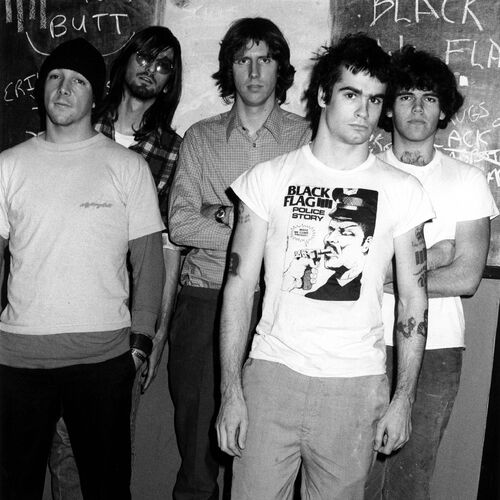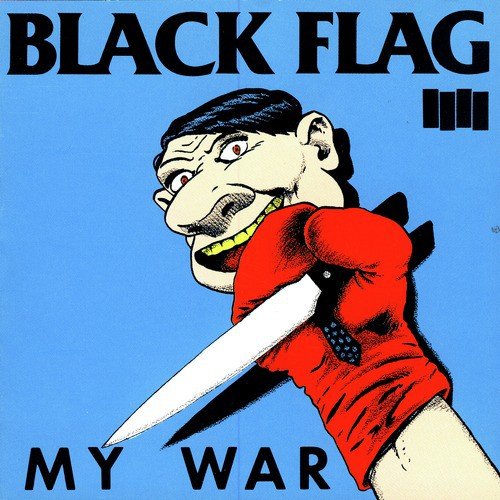BLACK FLAG
Silent voices that no one can see,
I hear voices that don't make a sound,
The distant calling that calls out to me
Feels so nice and hopeless when I'm rotting in your arms,
In my head in my head
I want to be that bullet that goes ripping through your skull,
In my head in my head"
Song - In My Head
Album - In My Head
Year - 1985
Introduction
Uncompromising attitude, rebellious,
non-conformist views, and Anti – Authoritarian, Black Flag was the face of the
Punk Rock movement in the late 70s, pioneering subgenres like Hardcore Punk and
influencing a plethora of bands across the spectrum of the rock and metal
genres altogether. The Punk DIY - ethic,
the non -conformist attitude, the atonal use of rhythm, and the use of
experimentation in their songs earned them the legendary status that the band
enjoys today. Known for their aggressive tone, relentless punk-inspired live
performances, and their usage of progressive elements in their music, in an era
where punk bands stuck to simpler song structures, Black Flag emerged as one of
the legendary bands we know today, at least to those who are into the genres of
hard rock and heavy metal.
Inception and Early Years
Being of Californian descent, and formed in 1976,
Black Flag went through several line–up changes over the years, with guitarist
Greg Grin being the only constant member of the band throughout the band’s
history, who is also the band leader, and the primary composer. Inspired by legendary early punk rock acts
such as the “Ramones” and “The Stooges”, their early work was rawer and abrasive,
sounding similar to the likes of their own influences.
Black Flag was also one of the first bands in
the “first wave of American West Coast punk rock”, contributing significantly
to the Punk – Rock lifestyle in the United States and abroad. Since they were
so much into experimentation, they were the first of the punk bands to
incorporate heavy metal elements and utilize jazz influences in the music, not
conforming to the traditional 3 chord patterns that all the other punk bands
were playing at that time.
The anti-establishment ideas were so deeply
rooted in their ethos that they refused to approach any major record labels to
promote their music. Instead, they heavily promoted the DIY record-producing
ethic, most of their records were released under Greg Grin’s independent record
label SST Records, encouraging other bands to be self-sufficient as well. They are the
reason why the DIY ethic still flourishes even to this day.
The Henry Rollins Era
Henry Rollins took over the vocal duties in the
year of 1981 till 1986, shifting and refining the band’s style towards newer
horizons of punk rock.
Pioneering and defining the Hardcore Punk movement in the early 80s propelled traditional punk rock to newer heights with a heavier sonic attack and arising controversy through the imagery and the ideas that they were promoting at that time.
While Punk rock originated in the mid-1970s as
a reaction against the mainstream rock of the time. It typically features
fast-paced, energetic songs with simple chord progressions, catchy melodies,
and a raw, stripped-down sound.
Hardcore Punk takes Punk Rock a step further. It
is characterized by its penetrating, blistering speed, heavy guitar riffs,
thrashing drums, and often shouted politically charged lyrics.
It was all about the attitude, non – conformism,
anarchist ideas, use of satirical commentary, and dark humor in their lyrics
targeting the idea of the establishment and organization rather than a mere reaction to the type of music played at the time. Hardcore Punk bands preferred playing in smaller venues promoting intimate interaction with their audience, which often got violent and bloody due to the much heavier sound. This attracted a lot of controversy from the mainstream and Black Flag faced some bans and restrictions from playing in public venues with large crowds. The idea of playing in front of a small crowd promoted unity and involvement within the punk community. The metal community borrowed this idea of promoting solidarity, unity, and brotherhood within the community which makes metal a more welcoming genre for newcomers.
The band’s new direction with the arrival of
Henry Rollins made them the face of the new age of punk rock. Most of their
shows had wild mosh pits, and aggressive stage persona with Rollins playing the
titular figure. Most of the punk rock shows were known to be very violent with
most of the people in the audience getting physically hurt in some or the other
way.
Iconic Lineup: Henry Rollins as the frontman,
Greg Ginn on guitar, Chuck Dukowski on bass, and Bill Stevenson on drums.
More emphasis was given to experimentation with
their sound, musical characteristics, and lyrics in the early 80s. They slowed down tempos and added a bit of
melody in instrumentation while still keeping the core values of the punk ethos.
Lyrics were more self – introspective with themes revolving around neurosis,
paranoia, economic disparity, poverty and social isolation.
Imagery and Art Influences
Being politically charged, Black Flag always had
a satirical, heavily anti-political approach to their imagery, which can be
noticed in their album covers. It often had artwork with strong provocative messages
highlighting the confrontational, rebellious attitude of the band.
Their iconic four bars logo became a Punk Rock
icon, which was designed by Raymond Pettibon, brother of guitarist Greg Grin,
instead of hiring a graphic or logo designer, which was again highlighting the
DIY nature of Punk. Pettibon was closely related to the band, designing fliers
and the band’s merchandise as well. He typically worked using only pen and ink
and the template that he did most of his artworks had small panels, so the
message conveyed had to be direct and powerful due to the lack of space and
color.
Graphic Design and Punk Aesthetic: Black Flag's
visual style embodied the do-it-yourself ethos of the punk movement. The raw
and sometimes crude aesthetic of their artwork reflected the band's
authenticity and rejection of mainstream commercialism.
The iconic Black Flag logo
Influences and Legacy
Tons of bands have been directly and indirectly
influenced by Black Flag. Minor Threat,
Converge, Bad Brains, and Descendants are some punk bands that carry over
the Black Flag style.
The entire Seattle Grunge scene was inspired by
the punkish riffs, especially when they released their album "My War" (1984) with
slowed-down tempos and self-introspective lyrics, on which the entire Grunge
Scene was based.
Bands like Nirvana, Soundgarden, Mudhoney, Tad,
Hole, Screaming Trees, etc. were directly influenced by Black Flag. Kurt Cobain also mentioned that the album “My War” was one of his top 50 albums
of all time. Many of the grunge songs borrowed ideas from Black Flag. Examples
include “Come as you are” by Nirvana, Mudhoney’s “Touch Me I’m Sick”
or any of the early Soundgarden songs.
Experimental Rock act Melvins were also
hugely influenced to create and pioneer Sludge Metal because of the style of
riffing Black Flag incorporated in their later albums.
Many Metal acts such as Slayer, Pantera, Ministry,
Tool, and The Dillinger Escape Plan borrowed ideas from the early Black Flag
days.
Tool’s Maynard James Keenan cited Black Flag
as one of the main influences behind his music. Red Hot Chili Peppers bassist
Flea and John Frusciante cited Black Flag as influential in the type
of music they play.
Many other genres took shape because of the
heavy influences of Black Flag’s music.
Conclusion
Black Flag’s influence on the punk rock genre
is immeasurable. Channeling raw energy, DIY ethos, and confrontational soul, they
pushed the limitations of what punk music could be. Experimenting with sounds, tempos, and lyrics earned
them their respect in many other genres of music, even to the extent of starting
and pioneering new genres. Black Flag's enduring heritage serves as a reminder
of the power of music to challenge conformist ideology and inspire rebellion.







No comments:
Post a Comment